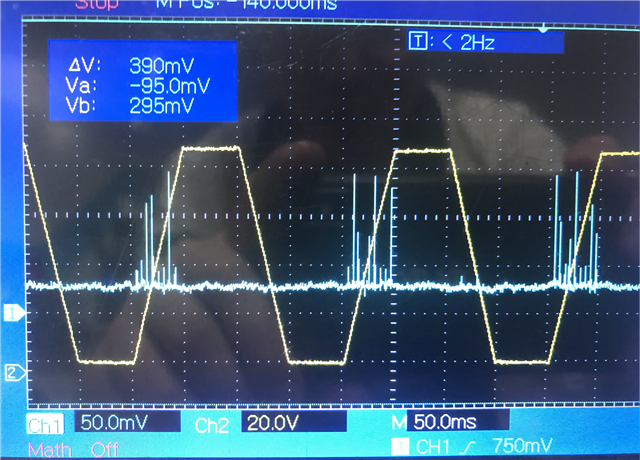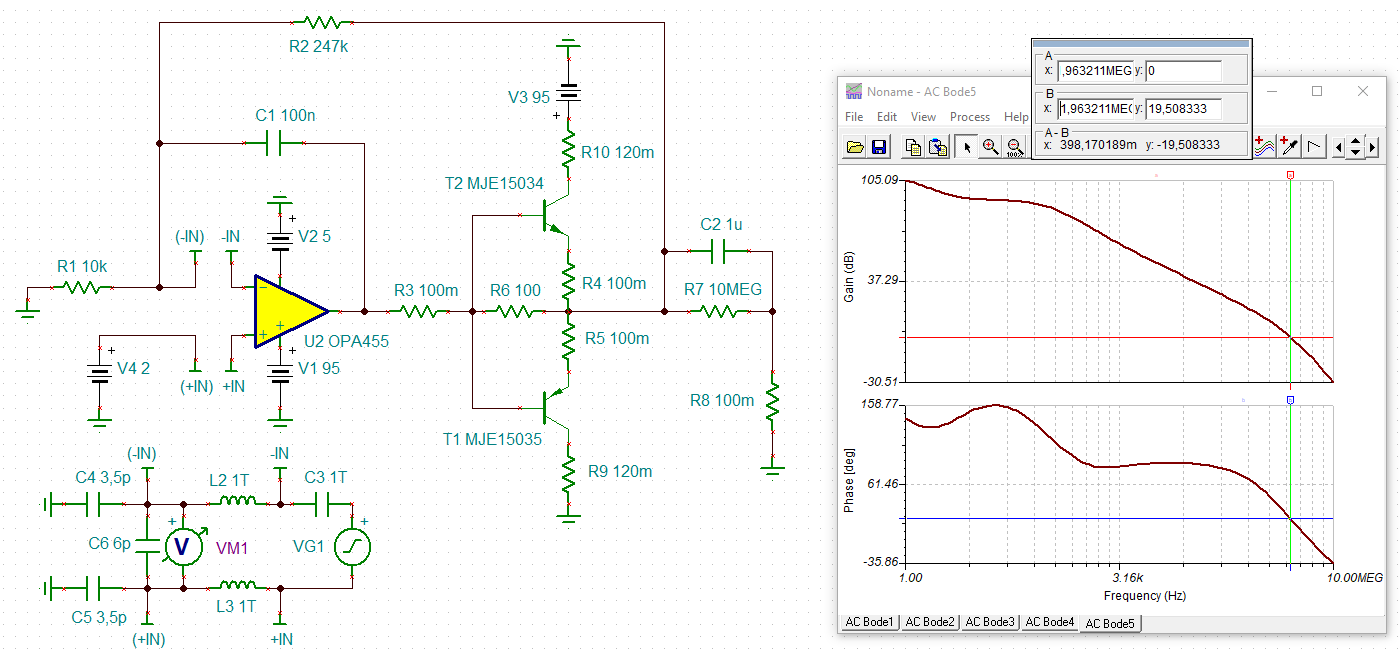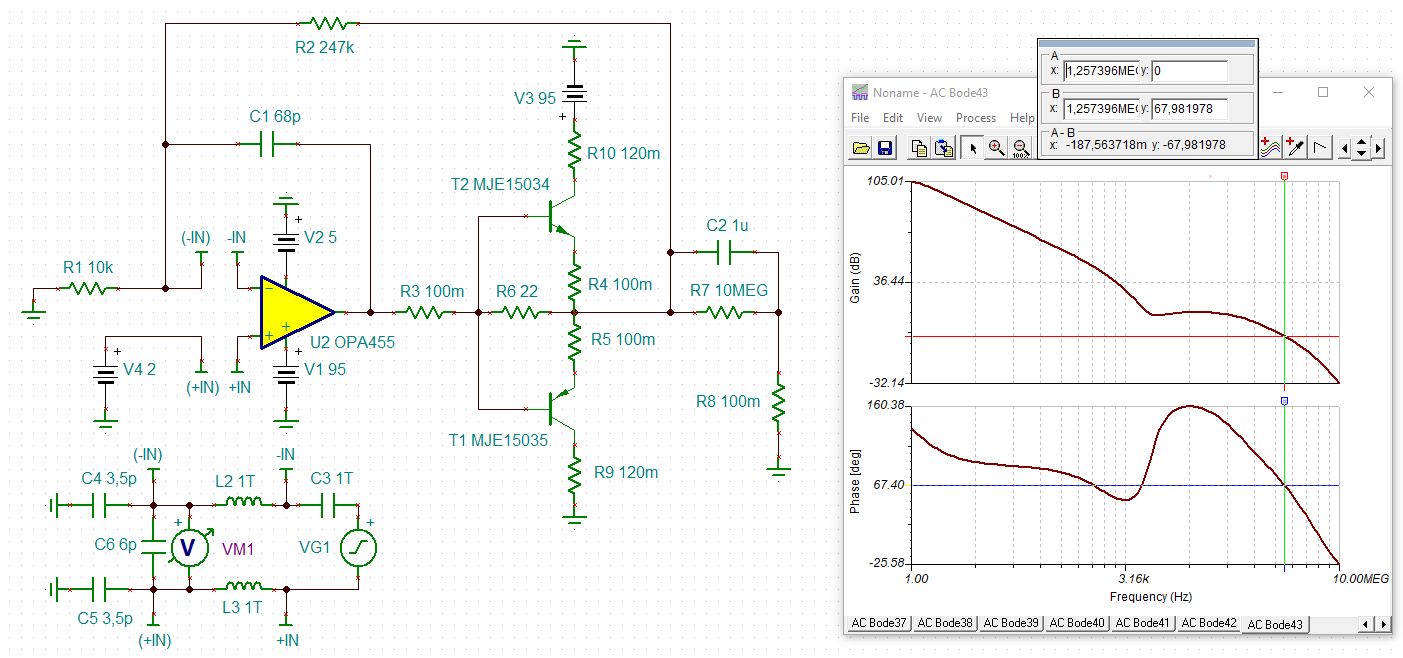Other Parts Discussed in Thread: OPA2191
Hello, TI Expert :
1.I am using OPA455 to extend the current , below is the sample schematic. I am confuse the current waveform, why it will occur the pulse current . Can you help share the technology knowledge .
2.The DAC output is 50 point to reached 0V – 3.3V the OPA455 gain is 29, so the output voltage 95.7V.






